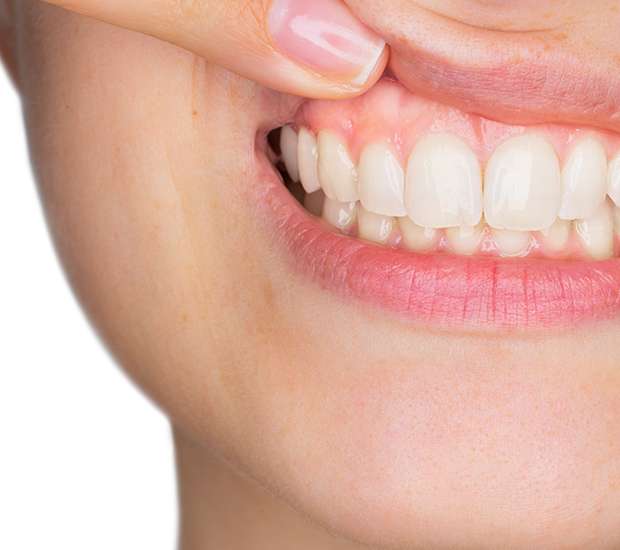
At North Atlanta Center for Cosmetic & Implant Dentistry, we work diligently to prevent gum disease in our patients. Gum disease is a common condition and most adults will suffer from some form of gum disease during their lifetime. The challenge is that gum disease can lead to bone and tooth loss, making it incredibly important to both prevent and treat it. If you live in Buford or the surrounding area, we can examine you and let you know if you are showing any signs of the condition, along with making recommendations for how to prevent it. To schedule an appointment, call (770) 932-1115.
There are several reasons that gum disease develops. The primary causes are plaque and tartar. Anything that becomes stuck between your teeth, gums or under the gum tissue, can cause irritation and swelling. Plaque is a problem that everyone deals with; however, it is the buildup under the gums that really causes issues. There are other risk factors to consider like pregnancy, diabetes, and smoking, since they restrict blood flow to the gums, causing them to swell.
We recommend doing what you can to prevent gum disease so you do not experience discomfort or additional health problems. One of the best ways to prevent this condition is to keep your teeth clean. At North Atlanta Center for Cosmetic & Implant Dentistry, we encourage our Buford patients to brush their teeth two to three times a day and to do so in a circular pattern, moving food particles and plaque away from the gums toward the center of the mouth. You also need to floss on a daily basis, and be sure to reach all the way down, rather than stopping at your gum line. Using an antiseptic mouthwash can also help kill lingering bacteria. You also need to have your teeth cleaned at least twice per year. It is difficult to remove all of the plaque at home, and tartar is too hard to remove by brushing and flossing. We can remove both plaque and tartar in our dental office and reduce your risk of gum disease. Simultaneously, we recommend that you stop smoking, keep your blood sugar under control, and drink plenty of water, since this can also help improve your gum health.
If you live in the Buford area, call (770) 932-1115 to schedule your dental exam so that you can remain in good dental health or receive treatment for a current condition.
Some of the most common signs of gum disease are:
If you notice any of these symptoms, we recommend that you call 770-932-1115 to schedule an examination with our dental office.
There are several ways to treat gum disease, and what we recommend will be based on how far the condition has progressed. To start, we typically recommend that our patients have a standard teeth cleaning. If you are only at the beginning stages of the condition, that is likely all you will need to return your gums to good health. However, if the condition has progressed further, you may need a dentist to provide you with the following:
Severe gum disease can drastically and negatively impact your oral health. As gum disease progresses, your gums will swell and then begin to recede or pull away from your tooth structure. This is problematic because the more of your teeth and roots that are exposed, the more likely it is that bacteria will begin to attack them. Simultaneously, your jawbone can also be negatively impacted and begin to lose its density. If you do suffer from bone loss, you may need a bone grafting procedure. During a bone graft, we place synthetic bone in the area where you experienced loss to encourage bone growth. This can be a necessary procedure when you have experienced enough bone loss to negatively impact the health and stability of your other teeth or the appearance of your face. Whether or not this is necessary is highly dependent on what your X-rays show. However, if you identify signs of gum disease and treat it early, you are likely to prevent the need for this procedure.
If you suspect that you may have gum disease because your gums are red, swollen, or receding, call our dental office right away. At North Atlanta Center for Cosmetic & Implant Dentistry, we can examine you, let you know if gum disease is present, and make recommendations regarding how to treat it.